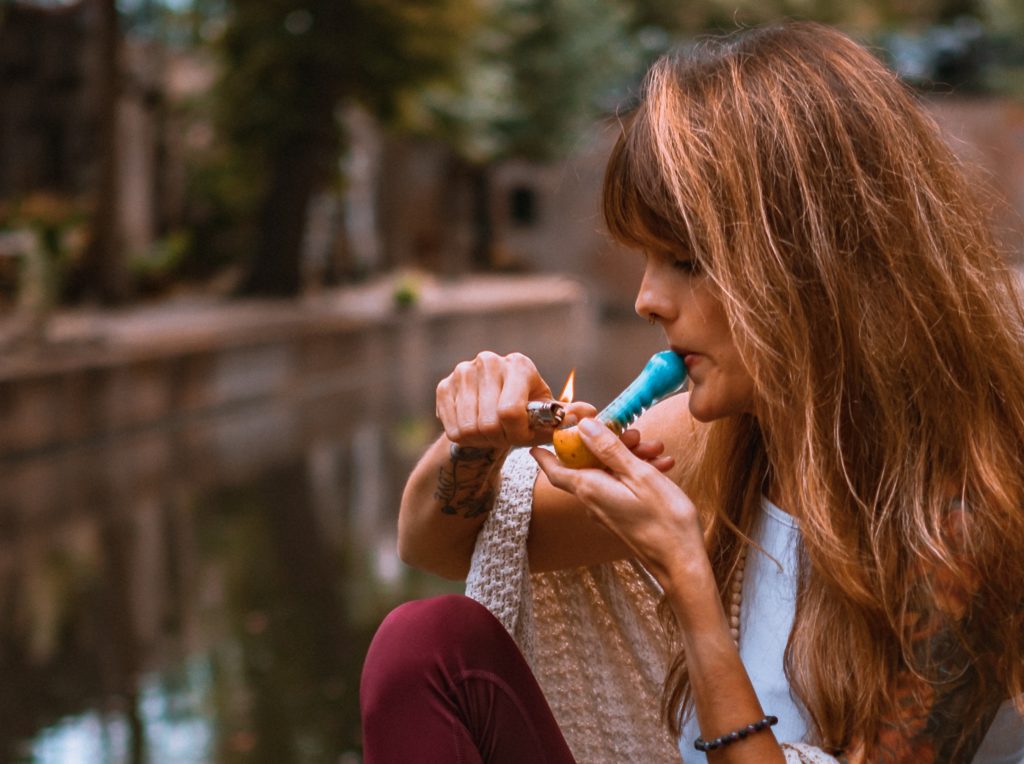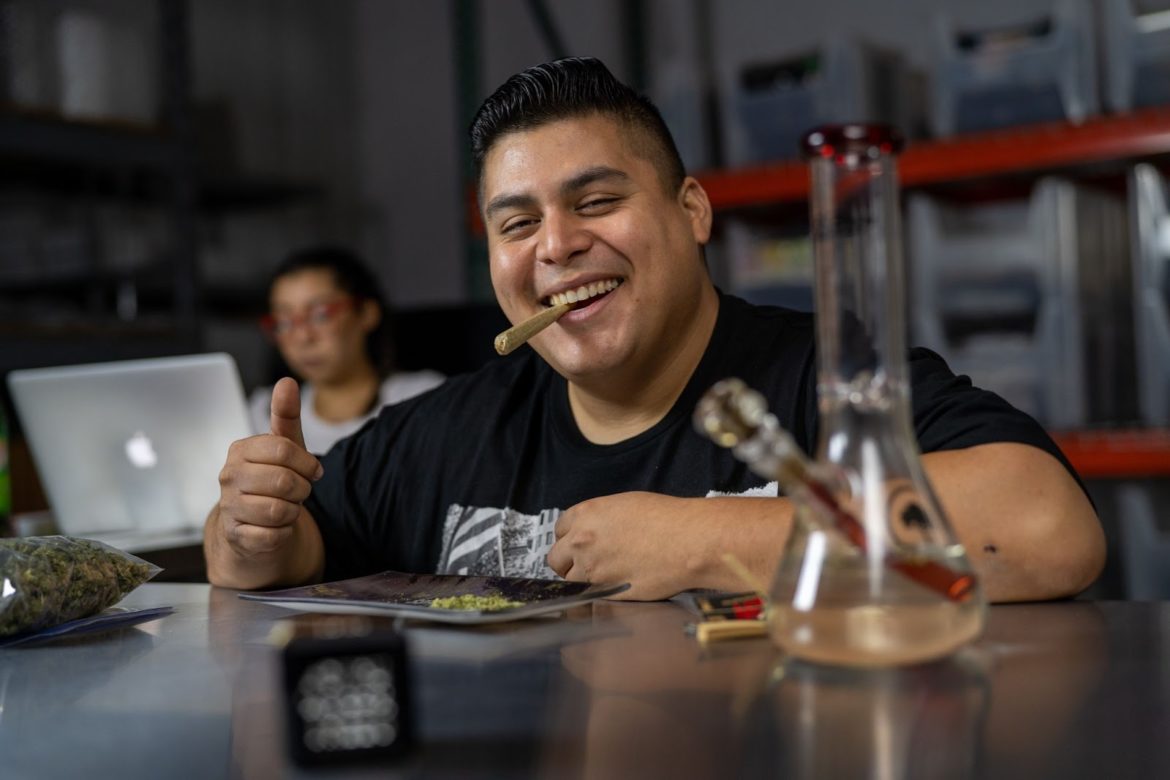You’re minding your own business (or not), scrolling through Facebook, Instagram, Tinder, or Bumble. You see something that says “420 friendly” in someone’s dating profile or on an event page. Does that mean they’re inviting 420 people to the event? Does it mean that they’re dating 420 other people? What gives?
You’re not missing something. It’s a code, and if you don’t understand cannabis culture, it’s one you may have never encountered before. It may seem strange to continue to speak about weed in code, especially if you live in a state where weed is legal. The reason why people use the term is to pay homage to early American cannabis culture.
420 friendly means “weed-friendly”
420 is a reference to cannabis, and it’s been used for decades as a way to slyly state that someone uses weed or is okay with other people who use weed. The only problem with the term is that, as weed became more socially acceptable, too many people came to know what it meant in order for it to truly function as a low-key message.
It’s also used to bypass censorship or avoid post removal, as there are plenty of legitimate and completely legal reasons to use a three-digit number, where words like “weed” or “joint” might automatically send up red flags. Using the term 420 in conjunction with other words associated with weed may not have the same effect. Don’t be surprised if your “smoke on 420” comment disappears.
You might see listings for Airbnbs where the owners state that they’re 420 friendly, which means that they don’t intend to bring legal consequences to you if you smoke weed on the back porch. This code can also be used to avoid comment removal or automated spam flags if subtlety is utilized well enough.
What 420 doesn’t mean
Before the internet, people liked to make things up. They still liked to make things up after the internet, but the biggest difference was that people were readily available to fact-check them. The term “420” has nothing to do with a state’s police dispatch code for cannabis-related crimes. It doesn’t have anything to do with the number of active ingredients in cannabis.
It’s also not a reference to Hitler’s birthday or the Columbine Massacre, both of which just so happened to occur on the date of April 20th in their respective years. These two misleading answers stem more from conspiratorial thinking, and may even be malicious in their intentions by deliberately drawing a connection between cannabis, the holocaust, and school shootings.
Outside of potential malicious intent, these answers were likely formulated because nobody knew The Waldos from Marion County, California. They’re the ones who started the term, and they did it decades before anyone could post about it on social media.
The origins and significance of 420 in cannabis culture
During the early 1970s, many people were still locked into the “Reefer Madness” mindset about weed. There were very few people who were open about weed use. Jack Herer had not yet published The Emperor Wears No Clothes. Cheech and Chong’s Up in Smoke wouldn’t come out until the end of that decade. George Carlin (with his comedy special FM & AM) was one of few public figures who shamelessly discussed cannabis through his art form in the early 1970s.
This doesn’t mean people weren’t using weed or writing love letters to it. The potential legal ramifications that would come from admitting weed use or publicly implying weed use through direct language was a major obstacle for speaking about it. Many members and associates of The Grateful Dead had been arrested for drug possession in 1970, which undoubtedly impacted the way they communicated about cannabis.
The story of how “420” came to be ubiquitously associated with weed is unlikely and somewhat funny. The term originated from a group of students that attended California’s San Rafael high school in the early 1970s. 420 was actually 4:20 PM, which is when they’d get out of school to go smoke weed together. Simply stating “420” was a subtle agreement that they were up for a meeting and a joint.
This group of friends who called themselves “the Waldos” inadvertently started a borderless trend of code talking that still continues to this day. Just by letting trusted people in on their code, word spread until an entire culture of cannabis users adopted their vernacular. It’s theorized that The Waldos were avid Grateful Dead fans who followed the band and shared their code with Dead Heads, who continued to share it with each other.
The term has now evolved to the point where 4/20, or April 20th, is an unofficial cannabis holiday. It’s like Christmas at the dispensary. People get together to order junk food, watch their favorite movies, and get high. In the interest of fairness, this is what cannabis users prefer to do on any day that even vaguely resembles a holiday. Or a Wednesday. You know what? They’re cool to do it as soon as they get off work.

In modern times, 420 is typically used in the cannabis tourism industry
States with legal weed often denote tourist opportunities or guided tours as “420” events. They’ll point visitors in the directions of 420 friendly accommodations. They’ll load them up on buses to take them to dispensaries, cannabis gardens, and establishments that are fine with their visitors using cannabis on the premises.
These businesses are aware that they don’t have to speak in code, but they’re holding firm with tradition. It’s similar to bars that model themselves as speakeasies or reference prohibition. They’re using the term for its nostalgia and to market to old school cannabis users who remember when talking in code was a necessity.
This kind of tourism brings significant money to states with legal cannabis. People can go to any state at any time they want, but they’re choosing to vacation in states where they can recreationally use weed to have a good time.
This 420 friendly business model can significantly boost revenue for local businesses, particularly because major chain bars, grills, and restaurants refuse to be associated with cannabis use. Every local business that welcomes 420 tourism puts money back into the hands of the local people, rather than into the pockets of a large corporation.
If you live in a state where cannabis isn’t legal, consider planning a 420 friendly trip. You’ll get to smoke pot without repercussions and spend your money helping a community thrive. Who doesn’t want to enjoy pizza and weed simultaneously in a great atmosphere? It’s a scenario where everyone wins.
We’ve reached a point where we can mostly drop the code
There are some important things to consider about weed code. They hold a very important historical significance. They’ve been used by counterculture leaders and cannabis activists for decades, and they formed a language that allowed cannabis users to understand each other without tipping off the general public who may not have been as receptive to their proclivities.
These terms mean something. They represent a history of cannabis use being risky or dangerous. As a society, we’re beginning to evolve past that. Although cannabis is not legal at a federal level, many states are independently legalizing recreational use or at the very least decriminalizing cannabis to some degree.
If we want to push cannabis culture forward, a little more candor might help to remove the stigma and normalize the conversation about weed. You don’t necessarily have to say that you’re “420 friendly” if you live in a state where smoking pot isn’t contrary to the law. You can say “I use cannabis” without fearing retaliation, and that might be the right attitude to take. Say it with your vape in your hand.
The takeaway
Speaking in secret code has been a cornerstone of weed culture for as long as most people can remember. These codes have existed since before many of today’s cannabis users were even born. As an increasing number of establishments and states become 420 friendly, there’s a good chance that this part of the vernacular will dissipate. It will be assumed that a place is 420 friendly because cannabis will be legal.
Emjay is always 420 friendly. In fact, we’re so friendly that we’ll deliver you any kind of weed you’re craving. Our selection of cannabis products is huge, and we’re able to get them to your doorstep in about half an hour. If you place your order at 3:50 PM, guess what time we’ll be there?
